Ceramic griddles are increasingly favored in kitchens due to their excellent non-stick capabilities and ability to distribute heat uniformly, enhancing cooking efficiency and results. These griddles have gained popularity as they require less oil, making cooking easier and cleaning easier. However, understanding how to clean ceramic griddle surfaces properly is crucial to maintaining their performance and extending their lifespan. Improper cleaning can lead to the build-up of stubborn stains and residues, such as grease, food particles, and burnt-on deposits, which may affect the griddle’s non-stick properties and evenness in cooking.
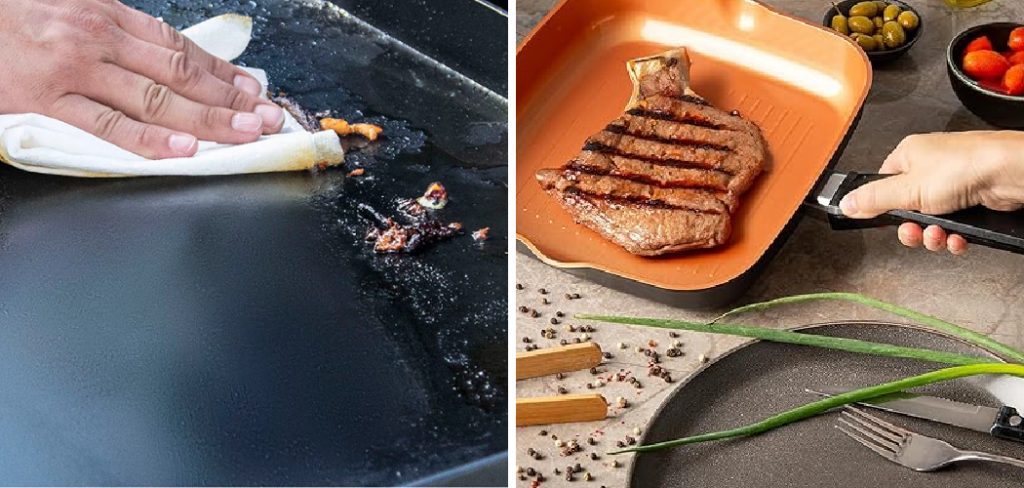
This article offers a comprehensive guide on effectively cleaning and maintaining ceramic griddles. Readers will find detailed methods and essential tools needed to keep their griddles in top condition. Whether dealing with everyday spills or more persistent residues, following these guidelines will ensure your ceramic griddle continues to be a valuable asset in the kitchen.
Safety Precautions
When cleaning your ceramic griddle, taking necessary safety precautions is essential to prevent injury and maintain the integrity of the griddle surface. Always allow the griddle to cool completely before cleaning to avoid burns from residual heat. It is advisable to wait until the griddle reaches a safe temperature that can be touched comfortably. Additionally, consider wearing protective gloves if using strong cleaning agents or scrubbing tools to protect your skin from irritation or harm.
Harsh chemicals and abrasive cleaning tools should be avoided, as they can scratch or damage the ceramic surface, reducing its effectiveness and lifespan. Opt for gentle cleaners, non-abrasive sponges, or cloths to preserve your griddle’s non-stick properties and appearance. By following these safety guidelines, you can thoroughly clean while safeguarding yourself and your ceramic griddle.
Tools and Materials Needed
The right tools and materials are key to effectively cleaning your ceramic griddle while maintaining its non-stick surface and longevity. Here’s a list of essentials to have on hand:
Cleaning Tools
- Soft Sponge or Cloth: Ideal for gentle cleaning to avoid scratching.
- Non-abrasive Scrubber or Nylon Brush: Helps tackle stubborn residues without damaging the surface.
- Plastic or Silicone Spatula: Useful for gently loosening stuck-on food.
Cleaning Solutions
- Mild Dish Soap: Perfect for regular cleaning to remove grease and food particles.
- White Vinegar or Baking Soda: Effective for tougher stains and residues, offering natural and powerful cleaning options.
- Optional: Specialized Ceramic Cleaner: Designed to maintain ceramic surfaces without harsh chemicals.
Optional Supplies
- Spray Bottle: Convenient for applying the vinegar solution evenly.
- Microfiber Cloth: Ideal for drying and buffing the griddle to a pristine shine.
Arming yourself with these tools and materials will ensure that your ceramic griddle remains in prime condition for all your cooking endeavors.
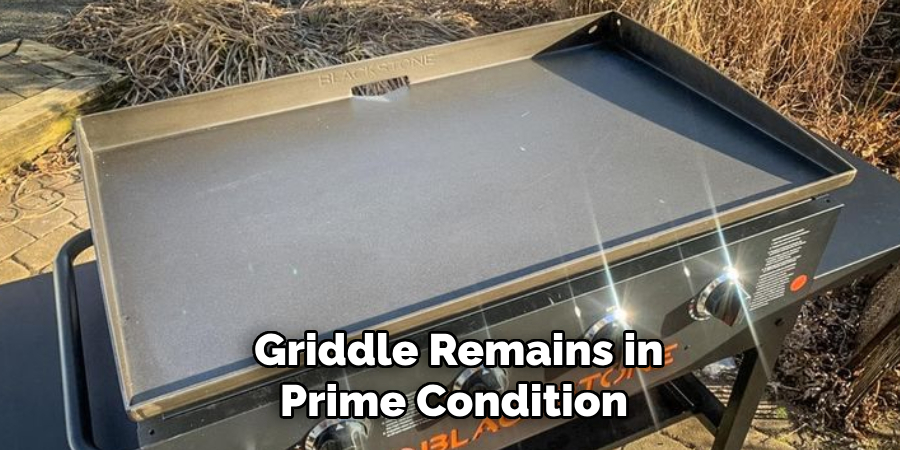
Preparing the Griddle for Cleaning
Step 1: Cool Down
Before cleaning, ensure that the ceramic grill has completely cooled. This precaution helps prevent burns from residual heat and avoids the risk of damaging the griddle surface by applying cleaning agents while it’s still hot. Allowing the griddle to reach room temperature provides a safe and efficient starting point for cleaning. Take your time to check that the entire cooking surface is free of heat before proceeding to the next steps.
Step 2: Remove Loose Food Particles
Once the griddle has cooled, use a plastic or silicone spatula to gently scrape off any loose food particles or debris. If needed, a soft brush can also effectively dislodges remnants stuck on the surface without scratching the ceramic. This step is crucial as it prepares the griddle for a more thorough cleaning by eliminating bulky residues, preventing them from spreading during washing.
Step 3: Soaking (if necessary)
For griddles with stubborn residues, consider soaking the surface in warm, soapy water for 10-15 minutes. This soaking phase helps loosen the grime, making it easier to remove during cleaning. Ensure the water is not too hot and that the soap used is mild to maintain the surface’s integrity. After soaking, proceed with a gentle scrub to further lift any remnants, resulting in a cleaner, non-stick surface.
How to Clean Ceramic Griddle: Cleaning the Ceramic Griddle
Method 1: Basic Cleaning with Soap
Step 1: Apply Dish Soap
Apply a few drops of mild dish soap to a damp sponge or cloth. Choose a gentle yet effective soap that cuts through grease to ensure the griddle is cleaned without damaging its surface.
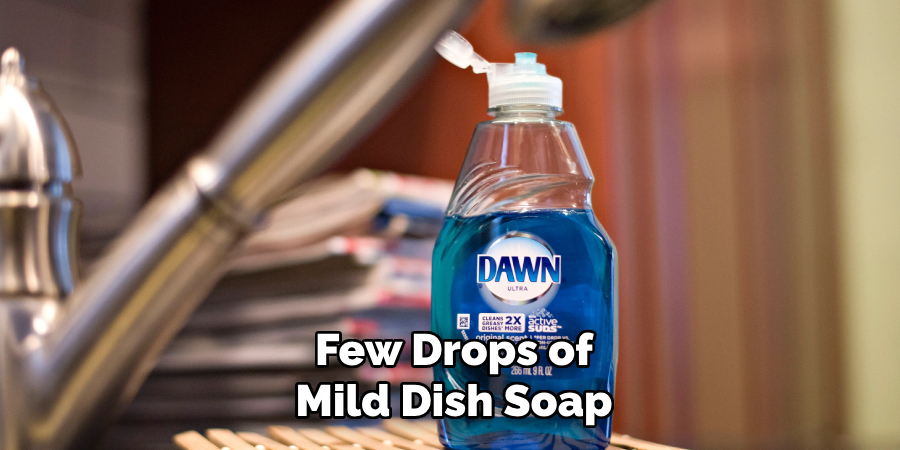
Step 2: Gently Scrub
Using a soapy sponge or cloth, gently scrub the griddle surface. Employ circular motions to distribute the soap evenly, especially in stained or greasy areas. The circular motion helps lift grease and dirt without being too harsh on the ceramic surface. Avoid using excessive pressure to prevent scratching the griddle.
Step 3: Rinse Thoroughly
Once the surface is scrubbed sufficiently, rinse the griddle carefully with warm water. Make sure to remove all soap residue, as leftover soap can affect the griddle’s non-stick performance and may interfere with future cooking. You may need to rinse several times to ensure that all soap is washed away.
Method 2: Baking Soda Paste for Tough Stains
Step 1: Create a Paste
Mix baking soda with a small amount of water to tackle tougher stains and form a thick paste. The paste-like consistency lets you apply it directly onto the stains without it running off.
Step 2: Apply Paste to Stains
Spread the baking soda paste liberally over any tough stains on the griddle. Allow the paste to sit for 15-30 minutes. This period allows the baking soda’s natural abrasive properties to break down the stain, making it easier to remove.
Step 3: Scrub and Rinse
After the paste has sat for the required time, use a soft sponge to gently scrub the stained areas. Keep the scrubbing motion light but thorough. Once the stains are scrubbed, rinse the griddle under warm water to wash away the paste and any lifted residue, ensuring a clean surface.
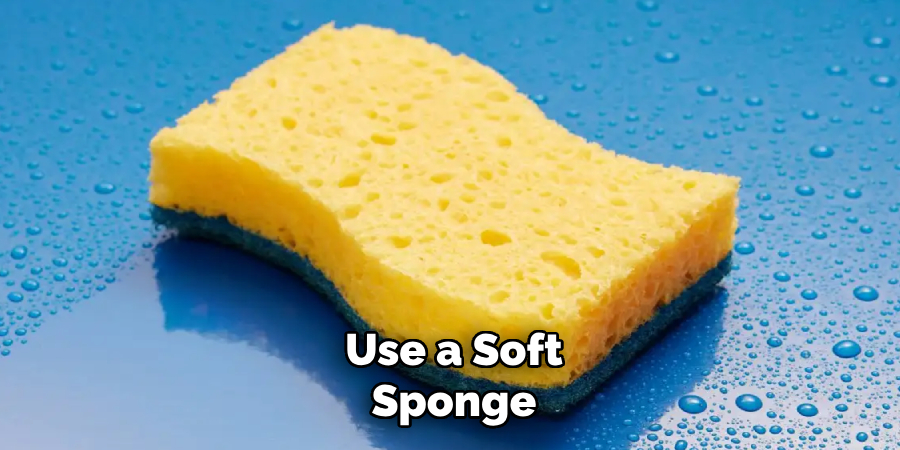
Method 3: Vinegar Solution for Residue
Step 1: Mix Vinegar Solution
Mix equal parts of white vinegar and water in a spray bottle. This solution is ideal for dissolving stubborn residues and is gentle enough to maintain the griddle’s integrity.
Step 2: Spray and Let Sit
Generously spray the vinegar solution over the entire griddle surface, focusing on areas with more residue. Allow the solution to sit for 5-10 minutes. This resting time helps the vinegar break down and dissolve sticky residues more effectively.
Step 3: Wipe Clean
After waiting, wipe the griddle’s surface clean using a soft cloth or sponge. Then, rinse the griddle thoroughly with warm water to remove any remaining vinegar solution. Make sure the griddle is dry before storing it to prevent water spots.
These methods ensure that your ceramic griddle remains clean and in excellent condition, ready for your next cooking adventure.
Drying and Storing the Griddle
Step 1: Drying the Griddle
After cleaning, it’s essential to dry the griddle thoroughly to prevent water spots and rust. Use a clean microfiber cloth to gently pat the surface dry. Microfiber cloths are excellent for absorbing moisture while leaving a streak-free finish. Alternatively, you can allow the griddle to air dry completely in a well-ventilated area. Ensuring the griddle is completely dry helps maintain the ceramic’s non-stick properties and prolongs its lifespan.
Step 2: Inspecting for Residue
Once dry, carefully inspect the griddle for any spots or residues that might have been missed during the cleaning process. Pay close attention to corners and edges where grease and grime tend to accumulate. If you find any remaining residue, reapply the appropriate cleaning method to that area to ensure a pristine finish. Regularly inspecting for residue keeps your griddle in prime condition and ready for use.
Step 3: Storing the Griddle
Proper storage is crucial to preserve your griddle’s surface. Consider using a protective cover to shield it from dust and potential scratches. If storing with other cookware, place a soft cloth or towel between stacked items to prevent direct contact with metal surfaces. Store the griddle in a dry, safe place, away from any heavy or sharp items that could damage the ceramic coating. Following these steps will ensure your griddle remains in excellent condition and ready for your culinary needs.
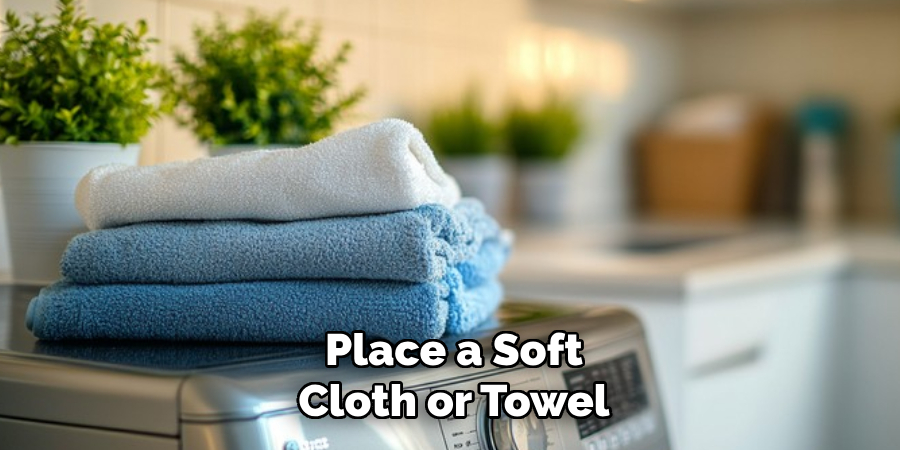
Maintaining Your Ceramic Griddle
Regular Cleaning Routine
Cleaning it after each use is crucial to maintaining your ceramic griddle’s optimal performance. This practice prevents the buildup of grease and food residues that can affect its non-stick surface and cooking efficiency. Regular cleaning also minimizes staining and prolongs the griddle’s lifespan.
Avoiding Metal Utensils
When cooking, always opt for silicone or wooden utensils instead of metal ones. Metal utensils can scratch the ceramic surface, leading to wear over time. Silicone or wooden utensils are gentle on the griddle, helping maintain its smooth finish and non-stick properties while ensuring your culinary creations are prepared without damage to the cookware.
Seasoning the Griddle
Occasionally, seasoning your ceramic griddle with a small amount of cooking oil can help preserve its non-stick capabilities. Simply apply a thin layer of oil after cleaning and allow it to soak in. This step adds an extra layer of protection, enhancing both performance and durability for future use.
Troubleshooting Common Issues
Problem: Stains Won’t Come Off
Persistent stains can result from using the griddle at high temperatures or not cleaning it immediately after use. Consider applying a stronger baking soda paste with less water to combat stubborn stains for more abrasive cleaning. Alternatively, soak the affected area in a more concentrated vinegar solution to dissolve residues effectively.
Problem: Scratches on the Surface
Minor scratches can occur from using metal utensils or improper cleaning techniques. If scratches are minimal, using a griddle conditioner or seasoning it with oil may help reduce their appearance. However, if the griddle is significantly damaged, impacting its performance, it might be time to consider a replacement to ensure even cooking and safety.
Problem: Food Sticking
Food sticking may occur if the grill isn’t properly preheated or if insufficient oil is used. Always preheat the griddle adequately before cooking and apply a thin layer of cooking oil to maintain its non-stick surface, ensuring effortless food release and easier cleaning.
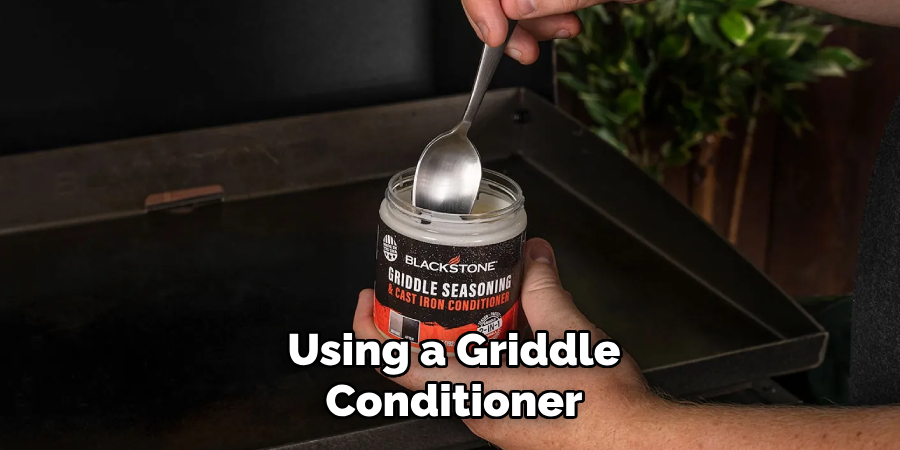
Conclusion
Proper maintenance and understanding of how to clean ceramic griddle are crucial for optimal performance. Key steps include regular cleaning to prevent residue buildup, using vinegar or baking soda solutions for stubborn stains, and avoiding metal utensils to preserve the ceramic surface. A consistent cleaning routine prolongs the griddle’s lifespan, ensuring its non-stick capabilities remain intact. With diligent care, your ceramic griddle becomes a reliable tool for creating delicious meals. Enjoy the satisfaction of cooking on a well-maintained surface, making every culinary experience both enjoyable and efficient.
With a keen eye for detail and a deep understanding of the firing process, I bring ceramics to life as a skilled kiln operator. My expertise ensures that each piece reaches its full potential, achieving the perfect balance of strength and beauty. I take pride in overseeing the critical final stage of pottery creation, transforming raw clay into stunning, durable art. 🎨
From monitoring temperatures to perfecting firing schedules, I ensure that every piece is fired to perfection. My role is not just about operating the kiln; it’s about understanding the unique needs of each creation and bringing out its best qualities.
Join me on this journey of precision and passion, where every firing tells a story. Whether it’s a delicate vase or a robust sculpture, I am dedicated to making sure that every piece that comes out of the kiln is a masterpiece. 🏺✨
Toby Rede is a professional potter focused on creating functional and artistic ceramics. His work blends natural textures with modern forms, often inspired by sustainable gardening and outdoor environments. Toby’s pottery emphasizes both utility and beauty, reflecting his philosophy of intentional craftsmanship. On the blog, he shares insights on integrating handmade objects into everyday life.
Education
- Master of Fine Arts in Ceramics, California College of the Arts
Professional Focus
- Creating practical pottery for everyday use.
- Using unique styles and techniques to convey narratives in ceramics.
Professional Accomplishments
- Showcased work in local and national art galleries, gaining recognition for craftsmanship.
- Received accolades for innovative designs in pottery competitions.